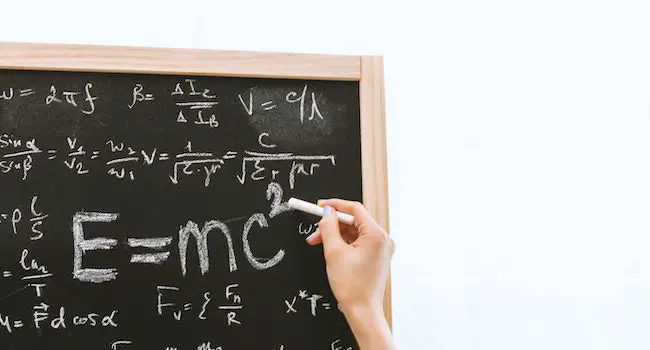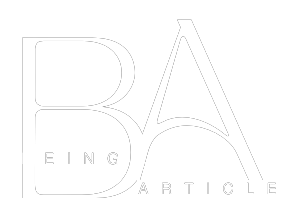How To Read Complex Mathematical Formulas And Equations?
Many people struggle with understanding complex mathematical formulas and equations. Fortunately, there are ways to make them more understandable.
One way is by embedding equations into MathML, which can be read correctly by screen readers and text readers. Another is by writing equations using an accessible handwriting app.
4 ways to make formulas and equations easy for maths students
Maths students can often struggle with learning formulas and equations, but there are ways to make it easier for them to understand and remember. Here are four tips to make formulas and equations easy for maths students:
1. Read The Formulas And Equations Aloud
Reading complex mathematical formulas and equations can be difficult, especially if you’re unfamiliar with them. For example, you might be reading a math book for the first time or studying for a test that requires you to apply complex mathematics. Regardless of the reason, you should have the right tools to help you navigate complex mathematical concepts and formulas.
One way to read complex mathematical formulas and equations is to turn them into stories. This helps you to remember them because the sequence of events in a story aids in the memory process. In addition, you can write a story to explain how to apply the formula or equation to a real-world scenario.
To use this technique, you’ll need a voice-enabled device and software to read the formula or equation aloud. EquatION is a free program that can read aloud any equation or mathematical expression you create in Google Docs. It also understands what you say and turns it into written expressions.
Another option is to use a tool that allows you to dictate the equation or formula aloud. This can be a handy tool to have on hand when you need to use a formula or equation for a project, quiz, or exam.
You can also use a calculator or your computer’s keyboard to create a formula or equation in Microsoft Word. Once you’ve finished, click or tap the equation to launch a Math Assistant pane that lets you solve it. If you have a Microsoft 365 subscription, you can also use the Immersive Reader feature to hear the solution steps in OneNote.
It’s best to read proof as written, but that doesn’t mean you can’t try to understand it in your own words. What’s clear to you might not be so to others, and you may even need to reread the proof to understand it in detail.
As you read, don’t try to memorize each phrase or detail; focus instead on building a framework of understanding that includes the whole idea. This is similar to how you’d reread a novel.
2. Read The Formulas And Equations In Context
Getting the most out of your mathematical learning experience requires reading and thinking about what you’re reading. This is not always easy but it can pay off in the long run.
As you read about a new concept, try to picture the whole situation, including the components of a formula and its relationships. This will help you understand math more clearly and give you confidence in your ability to tackle even the most challenging problems.
One way to do this is to keep a chart of the most important formulas and the conditions for each. This will help you remember them the next time you need them.
While at it, you might also want to consider installing the Math Anywhere add-on on your laptop and your computer to read this article. This will make navigating your emails, Twitter feed, and other web pages with math equations much easier. This little gizmo is the best and will surely please your math brain.
3. Read The Formulas And Equations In A Graph
Reading complex mathematical formulas and equations can be difficult, especially if you’re unfamiliar with them. Fortunately, there are several ways to make reading these formulas and equations easier.
One way to read an equation is to visualize the relationship in your mind. For example, if the equation is a function, you can think of a curve that varies based on input and output values. You can also imagine a graph of the relationship between the two variables.
If the equation has multiple solutions, it is important to shade the graph to show that these solutions exist on the graph. You can do this by drawing lines parallel to the x-axis and y-axis. This will give you a clearer picture of how the problem is solved.
Another way to visualize an equation is by using backspacing symbols. These are numbers placed at an equal distance from the x-coordinate in each direction (positive and negative).
You can use these backspacing symbols to show which part of the graph is influenced by inequality. For example, you could shade the entire graph if the inequality said y2 was greater than x(squared)-4x-1.
These backspacing symbols are called integral symbols and are important to understand. They are used to represent fractions, matrices, and tensors. They are usually hard to interpret at first, but once you know how to visualize them, they are easy to understand.
In addition to the formulas and equations in a graph, you should also learn to recognize and identify special types of mathematical functions. These can include exponentials, sine waves, Bessel, Laplace, Gaussian, and Airy functions.
It’s helpful to memorize these shapes and actions and think of them when encountering an equation that looks like one of these functions. It can help you remember that the equation tells you how to get a particular result by changing the variable in question.
Keeping a chart of the formulas you need to learn to find them quickly when needed is also helpful. For example, you might put them in your bedroom, kitchen, and bathroom, so they are always within easy reach.
4. Read The Formulas And Equations In A Table
When reading a mathematical formula, it is important to understand the meaning of each symbol in its context. This can be difficult if you only look at a single phrase in an equation or formula. It is best to start with the overall story or idea of the math and then read the symbols. This is similar to rereading a novel, which helps you better understand the story.
Markdown supports a few different formats to help you read formulas and equations. These include inline and display forms. These formatting options will affect how the equation is displayed.
Inline equations are referenced by a pair of dollar signs: $. This is the most common type of equation. In this style, an equation is displayed within the same paragraph as the text it references.
Another format is the display form, which uses a new paragraph and consumes less horizontal space. This is helpful for long equations, such as the sigma summation notation you asked about in your question.
Tables are also a great way to reference data within a formula. In Excel 2007, Microsoft introduced structured reference tables, which have some new syntax that makes referencing data easier.
If you use structured references, ensure you know how to format your formulas to refer to the correct parts of the table. This is especially important when referring to specific tables or columns in your formulas.
All structured reference table column references must begin and end with an opening and closing bracket []. These symbols indicate that the formula will be interpreted as a table reference.
You can also include a table name in a structured reference. This table name can be a default table name, like Table1, or a custom table name you created.
Structured table references are a good way to remember the names of the tables you have worked with and can be used to help you reference tables in your equations. This will also help you understand how the tables relate to each other.
How do you pronounce mathematical expressions?
The pronunciation of mathematical expressions isn’t easy, especially for those who aren’t familiar with the terms. Here are some guidelines to assist you in articulating mathematical terms correctly:
Tip 1: Break it into pieces
Mathematical equations usually have many components which is why breaking them into smaller pieces can aid in pronunciation. For instance”x2″ is an expression that “x^2” can be broken in two parts “x” and “squared”. This makes it simpler to pronounce the expression in a loud voice: “x squared”.
Tip 2: Use the correct tonal and stress
The correct stress and intonation could be a huge difference when uttering mathematical terms. Stress the right syllables and utilize the rising and falling intonation when appropriate. For instance in the phrase “cosine”, the stress should be placed on the second word: “co-SINE”.
Tip 3: Utilize phonetic symbols
Phonetic symbols can be helpful for pronunciation of mathematical expressions especially for those who aren’t familiar the terms. For instance, the phrase “p” can be pronounced in the form of “pie” or “pee” but the proper spelling will be “paI”.
Tip 4: Practice and practice, practice and practice
The more you practice articulating mathematical words, the more natural it becomes. Practice saying the expressions aloud and listen for recordings to hear them spoken. You could also try it with a teacher or a friend who knows the terms.
Mathematics is a language of numbers, symbols, and formulas that help us make sense of the world around us. While some people find math easy and enjoyable, others may struggle with understanding even the simplest of equations. If you have difficulty reading complex mathematical formulas and equations, this post is for you. Here, we will discuss tips and tricks to help you read and understand complex mathematical formulas and equations.
Understanding the notation and mathematical functions
Understanding the notation is one of the most important things to do before reading a complex mathematical formula or equation. Notation is the system of symbols and terms used to represent different mathematical concepts. For example, the symbol ∑ represents summation, and π represents the mathematical constant pi.
Before you start reading a complex formula, take the time to understand its notation. Look up unfamiliar symbols or terms, and try to understand what they represent. Understanding the notation is the first step toward understanding the formula or equation.
Break It Down
Complex mathematical formulas and equations can be intimidating, especially long and convoluted. One of the best ways to tackle such formulas is to break them down into smaller parts. First, try to identify the different components of the formula and understand how they fit together.
For Example, Consider The Following Formula:
F(x) = ∫f(x)dx
This formula represents the indefinite integral of a function f(x). To break it down, you could start by understanding what an integral is, what the notation ∫ represents, and what the function f(x) represents. Then, you can try to understand how these components fit together to give you the final result.
Breaking down complex formulas into smaller parts can make them easier to understand and help you avoid feeling overwhelmed.
Use Examples
Another helpful way to understand complex mathematical formulas and equations is to use examples. Find real-life examples using the same formulas and equations you try to understand. This can help you visualize how the formula or equation works and how it applies to real-world situations.
For Example, Consider The Pythagorean Theorem:
a² + b² = c²
This theorem represents the relationship between the sides of a right-angled triangle. To understand how it works, you could use real-life examples of right-angled triangles, such as the sides of a book or a rectangular table. This can help you see how the theorem applies to different situations and make remembering easier.
Draw Diagrams
Another useful technique for understanding complex mathematical formulas and equations is to draw diagrams. Diagrams can help you visualize how different components of a formula or equation work together, making it easier to understand the overall structure.
For Example, Consider The Following Formula For The Volume Of A Sphere:
V = (4/3)πr³
To understand how this formula works, you could draw a diagram of a sphere and label its different components, such as its radius and volume. This can help you see how the different components of the formula fit together and give you a better understanding of the formula as a whole.
FAQ’s
How can I simplify an extremely complicated equation?
To begin, you can identify each of the various terms and symbols used in an equation to break it down. Then, make an effort to simplify each term as much as you can using any rules or strategies you may have. Lastly, to better comprehend the equation as a whole, combine the simplified terms.
How can I learn to read and understand mathematical symbols?
It is essential to have a solid understanding of the common mathematical symbols and notations in order to interpret mathematical notation. To learn more about the various notations and their meanings, it may be helpful to consult a math reference book or an online resource. You can also improve your skills and self-assurance by working with straightforward examples.
How do I have at least some idea which request to perform activities in a situation?
Generally speaking, you can utilize the request for tasks (PEMDAS) to figure out which activities to perform first. This includes performing brackets, examples, duplication/division (from left to right), and afterward expansion/deduction (from left to right). However, there may be circumstances in which a different order of operations is required; consequently, it is essential to conduct a thorough analysis of the equation and to adhere to any provided specific instructions or guidelines.
How might I check my work while perusing complex recipes or conditions?
Doing the calculations in reverse, starting with the final result and working backwards through each step, is one way to check your work. This can assist you in locating any errors you might have committed along the way. You can also check for errors and verify your results with mathematical software or graphing calculators.
How can I improve my comprehension of complicated mathematical equations and formulas in general?
It is essential to begin with the fundamentals and gradually increase your skills and knowledge in order to improve your comprehension. Master the fundamental ideas and methods first, then move on to more difficult problems and equations. In addition, practice working with a variety of examples and problems to improve your abilities and boost your self-assurance.



















